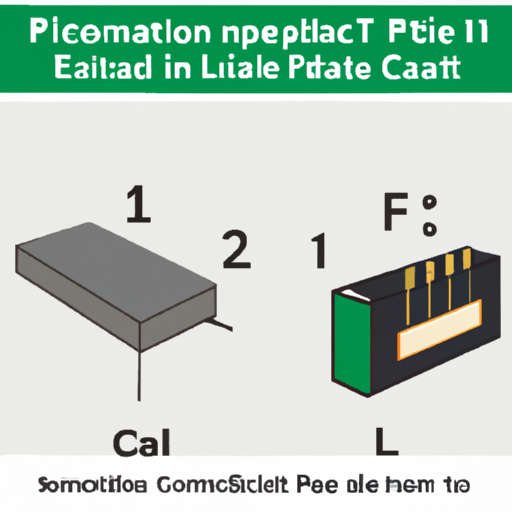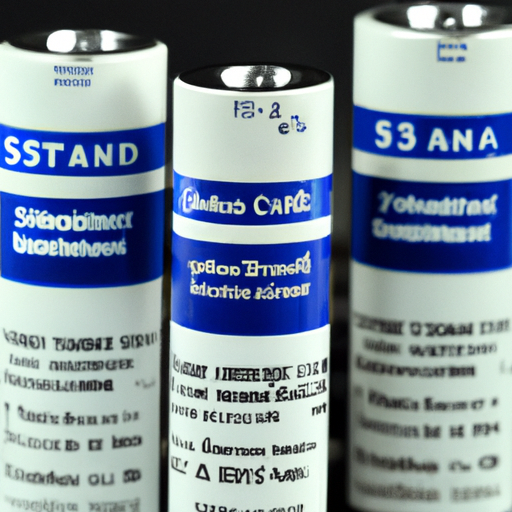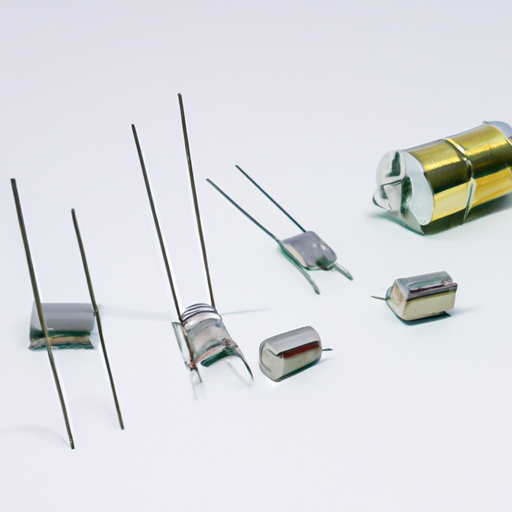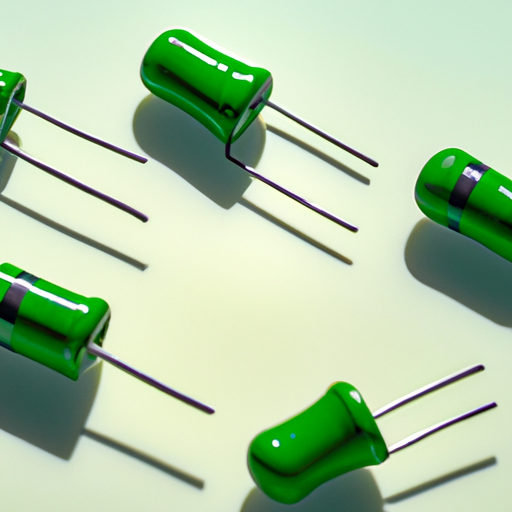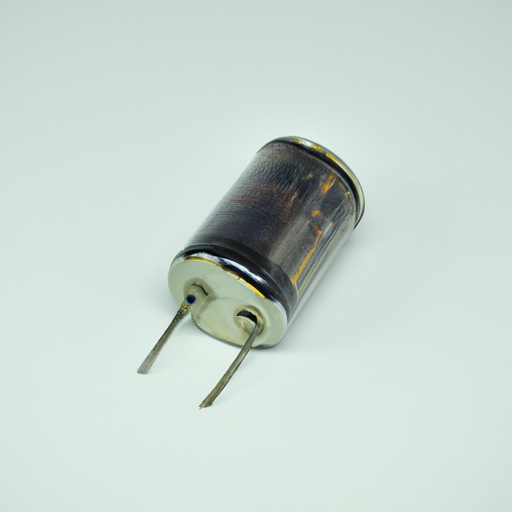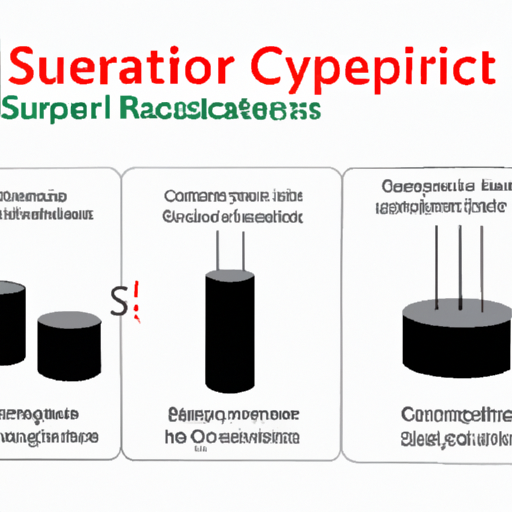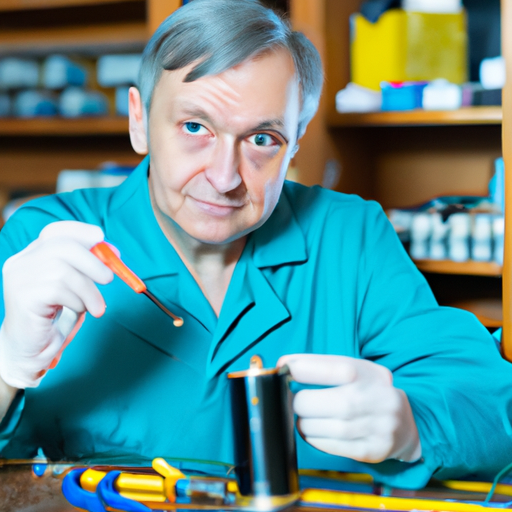What are the Product Types of Popular Capacitors?
I. Introduction
Capacitors are fundamental components in electronic circuits, playing a crucial role in the storage and management of electrical energy. They are used in a wide range of applications, from filtering signals to stabilizing power supplies. Understanding the different types of capacitors and their specific characteristics is essential for engineers, hobbyists, and anyone interested in electronics. This article aims to provide a comprehensive overview of the various product types of popular capacitors, their applications, advantages, and disadvantages.
II. Basic Principles of Capacitors
A. How Capacitors Work
Capacitors function by storing electrical energy in an electric field, created between two conductive plates separated by an insulating material known as a dielectric. When a voltage is applied across the plates, an electric charge accumulates, allowing the capacitor to store energy. The amount of energy a capacitor can store is determined by its capacitance, measured in farads (F).
B. Key Components of Capacitors
1. **Dielectric Materials**: The dielectric is a crucial component that affects the capacitor's performance. Common dielectric materials include air, ceramic, plastic films, and electrolytic solutions. The choice of dielectric influences the capacitor's capacitance, voltage rating, and temperature stability.
2. **Plates and Their Arrangement**: The conductive plates can be arranged in various configurations, such as parallel or rolled, which impacts the capacitor's size, capacitance, and efficiency.
III. Classification of Capacitors
Capacitors can be classified based on several criteria, including the dielectric material used, construction type, and application.
A. Based on Dielectric Material
1. **Ceramic Capacitors**: These capacitors use ceramic as the dielectric material. They are widely used due to their small size, low cost, and stability over a range of temperatures.
2. **Electrolytic Capacitors**: Utilizing an electrolyte as one of the plates, these capacitors are polarized and typically offer high capacitance values. They are commonly used in power supply applications.
3. **Film Capacitors**: Made with plastic film as the dielectric, these capacitors are known for their reliability and stability. They are often used in audio and high-frequency applications.
4. **Tantalum Capacitors**: These capacitors use tantalum oxide as the dielectric and are known for their high capacitance in a small package. They are often used in compact electronic devices.
5. **Mica Capacitors**: Known for their high precision and stability, mica capacitors are used in high-frequency applications and precision circuits.
6. **Supercapacitors**: Also known as ultracapacitors, these devices can store a large amount of energy and are used in applications requiring rapid charge and discharge cycles.
B. Based on Construction Type
1. **Surface Mount Capacitors**: These capacitors are designed for surface mounting on printed circuit boards (PCBs), allowing for compact designs and automated assembly.
2. **Through-Hole Capacitors**: These capacitors have leads that go through the PCB, providing a robust connection. They are often used in applications where durability is essential.
C. Based on Application
1. **Power Capacitors**: Used in power electronics, these capacitors help manage voltage and current levels, ensuring stable operation in power supply circuits.
2. **Signal Capacitors**: These capacitors are used in signal processing applications, such as filtering and coupling, to manage AC signals.
3. **Timing Capacitors**: Employed in timing circuits, these capacitors work with resistors to create time delays in electronic devices.
IV. Detailed Examination of Popular Capacitor Types
A. Ceramic Capacitors
**Characteristics and Applications**: Ceramic capacitors are non-polarized and come in various capacitance values. They are commonly used in decoupling and filtering applications due to their low equivalent series resistance (ESR).
**Advantages and Disadvantages**: Advantages include their small size, low cost, and stability. However, they can exhibit capacitance changes with voltage (DC bias effect) and temperature.
B. Electrolytic Capacitors
**Characteristics and Applications**: Electrolytic capacitors are polarized and typically have high capacitance values, making them ideal for power supply filtering and energy storage applications.
**Advantages and Disadvantages**: They offer high capacitance in a compact size but have a limited lifespan and can fail if subjected to reverse polarity.
C. Film Capacitors
**Characteristics and Applications**: Film capacitors are known for their reliability and are often used in audio applications, power electronics, and timing circuits.
**Advantages and Disadvantages**: They have low ESR and excellent stability but can be larger and more expensive than other types.
D. Tantalum Capacitors
**Characteristics and Applications**: Tantalum capacitors are compact and provide high capacitance values, making them suitable for space-constrained applications like mobile devices.
**Advantages and Disadvantages**: They have a long lifespan and stable performance but can be expensive and sensitive to voltage spikes.
E. Mica Capacitors
**Characteristics and Applications**: Mica capacitors are known for their precision and stability, often used in RF applications and high-frequency circuits.
**Advantages and Disadvantages**: They offer excellent performance but can be costly and larger than other types.
F. Supercapacitors
**Characteristics and Applications**: Supercapacitors can store large amounts of energy and are used in applications requiring rapid charge and discharge cycles, such as energy storage systems and backup power supplies.
**Advantages and Disadvantages**: They have a long cycle life and can charge quickly, but their energy density is lower than that of traditional batteries.
V. Emerging Trends in Capacitor Technology
A. Advancements in Materials
Recent advancements in dielectric materials have led to the development of capacitors with improved performance characteristics, such as higher capacitance values and better temperature stability.
B. Miniaturization and Integration
As electronic devices become smaller and more complex, the demand for miniaturized capacitors has increased. Manufacturers are focusing on integrating capacitors into circuit designs to save space and improve efficiency.
C. Environmental Considerations and Sustainability
With growing concerns about environmental impact, there is a push towards developing capacitors that are more sustainable and recyclable. This includes using eco-friendly materials and manufacturing processes.
VI. Conclusion
In summary, capacitors are essential components in modern electronics, with various types designed for specific applications. Understanding the characteristics, advantages, and disadvantages of different capacitor types is crucial for selecting the right component for a given application. As technology continues to evolve, capacitors will play an increasingly important role in the development of new electronic devices and systems.
By staying informed about the latest trends and advancements in capacitor technology, engineers and enthusiasts can make better decisions in their designs and applications, ensuring optimal performance and reliability.
VII. References
For further exploration of capacitors and their applications, consider the following resources:
1. "Capacitors: Principles and Applications" by John Smith
2. "The Art of Electronics" by Paul Horowitz and Winfield Hill
3. Online resources such as educational websites and electronics forums dedicated to capacitor technology and applications.


